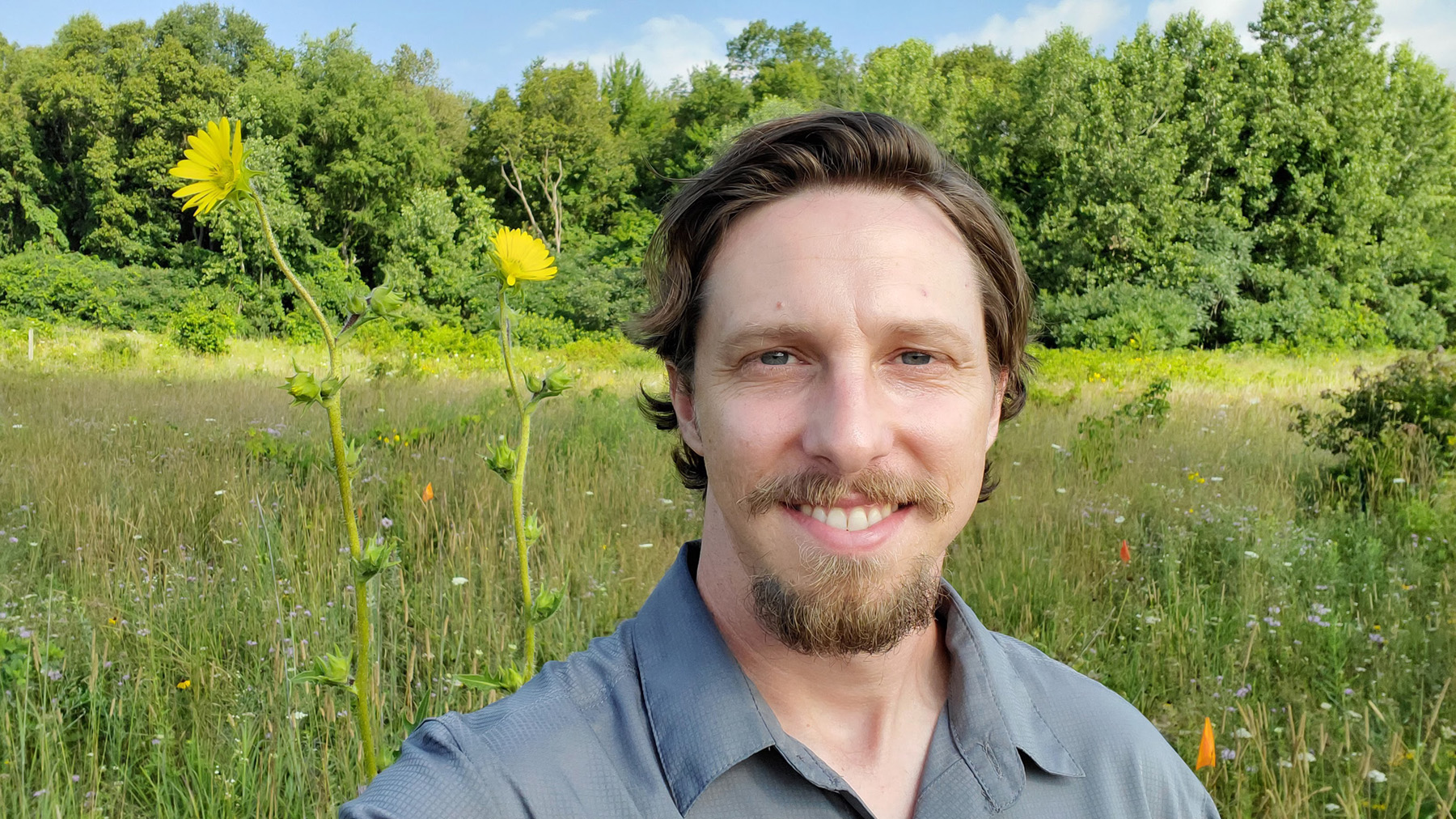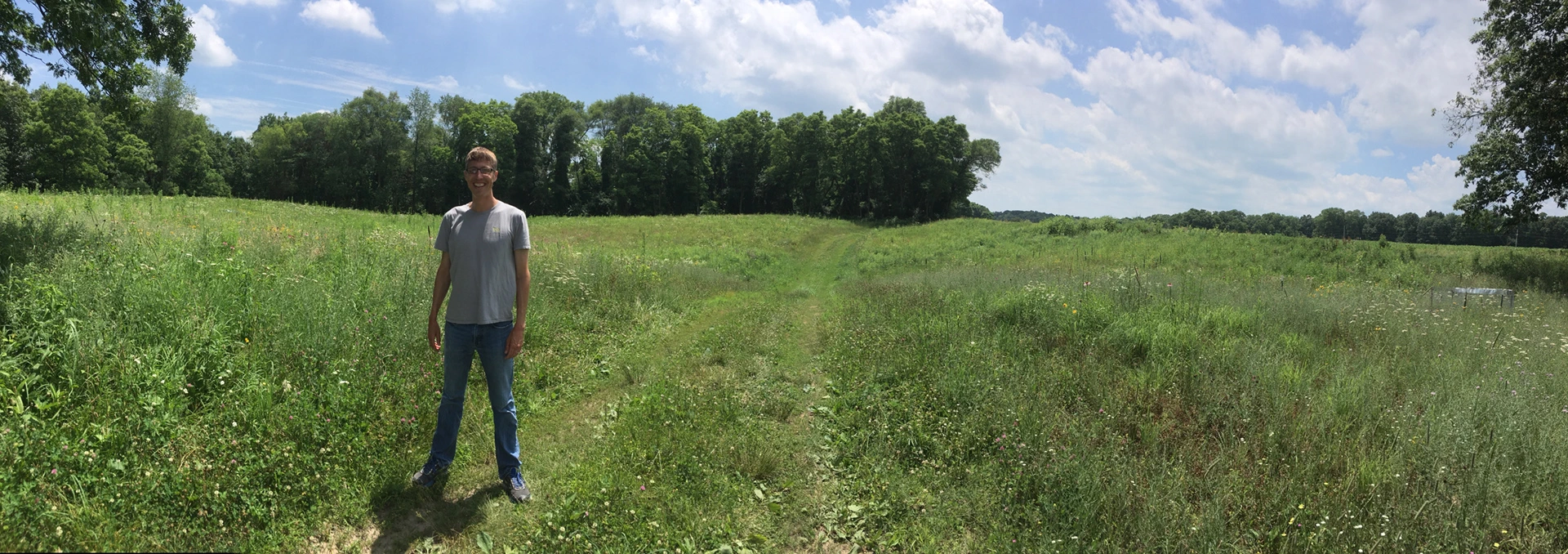More biodiversity isn't a silver bullet for ecosystem restoration
There’s a popular saying that people who ignore history are doomed to repeat it. It turns out that there’s another reason not to ignore history according to new research from Michigan State University published in the journal Ecology.
When it comes to restoring ecosystems to their natural state, people can’t ignore history if they want to repeat successful efforts.
“Restoration is somewhat notorious for giving you different outcomes for very similar approaches,” said EEB member Chris Catano, a research associate in the Department of Plant Biology at MSU and first author of the new report. “There’s a lot of variability.”

Catano works with Lars Brudvig, a professor in the College of Natural Science. One of the Brudvig Lab’s projects is illuminating the fundamental factors that contribute to that variability. With support from the National Science Foundation, this new study focuses on one of those factors — when a plot is restored — through the lens of biodiversity.
“What we’re seeing is that the past matters. History matters,” Catano said.
Working at a site that was once an active airstrip, the team restored 18 plots to prairie. The researchers kept all the restoration conditions as identical as possible except for when the restoration started.
They then tracked how different communities of organisms came together in those plots — for example, which species of plants grew and what other organisms they attracted. Beyond characterizing biodiversity, the team also analyzed how it affects the downstream ecological functions of a plot.
“This has been a huge question in ecology for nearly 30 years now, understanding what are the consequences of biodiversity for the ways an ecosystem functions,” said Brudvig, who is also a core faculty member of the Ecology, Evolution and Behavior Program, or EEB, at MSU.
Somewhat surprisingly, more biodiversity didn’t always translate to a more functional ecosystem in the team’s experiment.
There is a lot of evidence supporting a positive relationship between biodiversity and ecosystem

function, but many of those studies were carried out in highly controlled environments, the team said. With its unique site, designed specifically to examine the effects of history, the team observed that the relationship is more complex in a more natural setting.
“We saw relationships that ranged from positive to neutral to negative,” Brudvig said. “In nature, the results are a huge mixed bag.”
Brudvig stressed that this work doesn’t discount the previous results or negate the conclusion that, generally speaking, more biodiversity is a good thing. In individual cases, however, Brudvig’s team is showing that the impact of biodiversity is nuanced and complicated — it can’t be summed up in a single value or measured quantity.
“There isn’t a number for biodiversity that tells you the whole story,” Catano said. “In this case, it was the identity of key species and their traits, which are hidden behind numbers, that really matter for how the ecosystems function.”
The MSU team showed how those variables are connected to the history of a site, which was made possible through effort, expertise and a gift from a neurosurgeon with a passion for flying.
It’s not that ecologists didn’t know that history could affect the outcome of restoration work. They’ve had suspicions that planting seeds after a particularly wet or dry season, for instance, could affect the trajectory of the prairie that would sprout, Catano said.
What’s been missing is data from real-world settings that are still controlled enough to extract meaningful conclusions, Catano said. Another missing piece has been a theoretical component that can explain how history matters and how much it matters.
“It’s challenging because some of the theories aren’t always grounded in reality,” Catano said. “And then applications don’t always have the fundamental theories they need to be useful.”
Catano saw an opportunity to help resolve that disconnect with a set of plots Brudvig and a former doctoral student, Anna (Groves) Funk, established almost a decade ago at the Lux Arbor Reserve. Funk, who earned her doctorate in 2018, is also an author on the paper.
The reserve is part of the W.K. Kellogg Biological Station, or KBS, which is MSU’s largest off-campus education complex and one of North America’s premier inland field stations. A neurosurgeon named Richard Light gifted the reserve to KBS in 1991.
Light was also an amateur pilot, and the gifted land included a kilometer-long airstrip. It’s since been reclaimed by nature — mostly by weeds and invasive species — but it still provided a one-of-a-kind opportunity to Brudvig and his team.
“It’s incredibly level and it had incredibly uniform vegetation. It is a great place to do an ecology study,” Brudvig said. “Anna and I started dreaming this up in 2013, and we’ve been curating it since then. It’s taken cooperation across campus to keep it running.”
Read the full story in MSU Today



